Description
Our long-term goal is to contribute to the development of what we call the e-patient (digital patient) for e-medicine (digital medicine).
- the e-patient (or digital patient) is a set of computational models of the human body able to describe and simulate the anatomy and the physiology of the patient’s organs and tissues, at various scales, for an individual or a population. The e-patient can be seen as a framework to integrate and analyze in a coherent manner the heterogeneous information measured on the patient from disparate sources: imaging, biological, clinical, sensors…
- e-medicine (or digital medicine) is defined as the computational tools applied to the e-patient to assist the physician and the surgeon in their medical practice, to assess the diagnosis/prognosis, and to plan, control and evaluate the therapy.
The models that govern the algorithms designed for e-patients and e-medicine come from various disciplines: informatics, mathematics, medicine, statistics, physics, biology, chemistry, etc. The parameters of those models must be adjusted to an individual or a population based on the available images, signals and data. This adjustment is called personalization and usually requires the resolution of difficult inverse problems. The overall picture of the construction of the personalized e-patient for e-medicine was presented at the College de France through an inaugural lecture (fr) and a series of courses (fr) and seminars (fr), concluded by an international workshop.
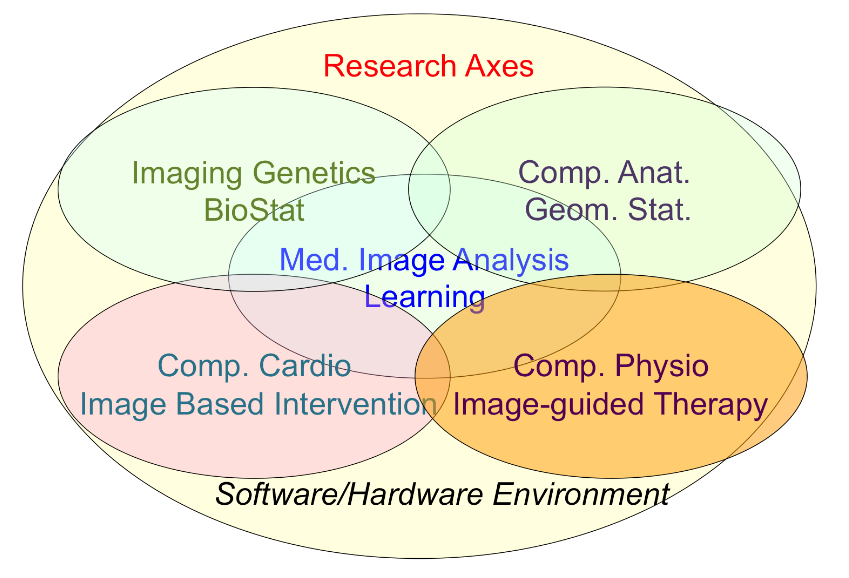
Scientific axes
- Biomedical Image Analysis & Machine Learning
- Imaging & Phenomics, Biostatistics
- Computational Anatomy, Geometric Statistics
- Computational Physiology & Image-Guided Therapy
- Computational Cardiology & Image-Based Cardiac Intervention
Technological Axes:
- Software Platform for Medical Image Analysis & Simulation
- Infostructure for Large Scale Biomedical Data Science
The chosen axes have non-null intersections, and the progress made in one axis can contribute to the progress of the other axes.
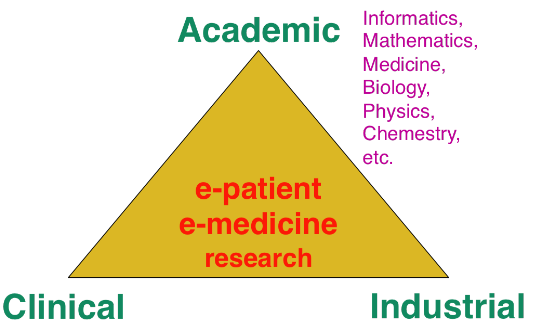
Organisation
The research organization in our field is often built on a virtuous triangle. On one vertex, academic research requires multidisciplinary collaborations associating informatics and mathematics to other disciplines: medicine, biology, physics, chemistry… On a second vertex, a clinical partnership is required to help defining pertinent questions, to get access to clinical data, and to clinically evaluate any proposed solution. On the third vertex, an industrial partnership can be introduced for the research activity itself, and also to transform any proposed solution into a validated product that can ultimately be transferred to the clinical sites for an effective use on the patients.
Research themes
Keeping this triangle in mind, we choose our research directions within a virtuous circle: we look at difficult problems raised by our clinical or industrial partners, and then try to identify some classes of generic fundamental/theoretical problems associated to their resolution. We also study some fundamental/theoretical problems per se in order to produce fundamental scientific advances that can help in turn to promote new applications.
A description of the on-going research projects can also be found in the annual Activity Reports:
- 2023: PDF – HTML
- 2022: PDF – HTML
- 2021: PDF – HTML
- 2020: PDF – HTML
- 2019: PDF – HTML – ePub
- 2018: PDF – HTML – ePub
- 2017: PDF – HTML – ePub
- 2016: PDF – HTML – ePub
- 2015: PDF – HTML – ePub
- 2014: PDF – HTML – ePub
- 2013: PDF – HTML – ePub
Collaborations
Industrial
- Caranx Medical
- Dosisoft
- ExactCure
- General Electric Healthcare
- InHeart
- Koelis
- Median Technologies
- Mauna Kea Technologies
- Microsoft Research
- Oticon Medical
- Philips Healthcare
- Quantificare
- Siemens Healthineers
- Therapanacea
- Therapixel
Clinical
- Guy’s and St Thomas’ Hospitals, London, UK
- Necker Hospital, Paris, France
- IHU Pitié-Salpêtrière Hospital, Paris, France
- Gaslini Hospital, Genova, Italy
- Great Ormond Street Hospital, London, UK
- IHU Strasbourg & IRCAD, Strasbourg, France
- IHU Bordeaux & CHU Haut Leveque, Bordeaux, France
- Mayo Clinic
- CAL & Nice Hospitals
Academic
- MIT
- Harvard Medical School
- King’s College London, Division of Imaging Sciences, London, UK
- Universitat Pompeu Fabra, Physense, Barcelona, ES
- University College London, Centre of Medical Image Computing, London, UK
- LONI, University of California, Los Angeles, USA
- CREATIS, Lyon, France
Scientific Leader
Nicholas AYACHE
Nicholas.Ayache@inria.fr
+33 4 92 38 76 61
Team Assistant: Nathalie Nordmann
+33 4 92 38 76 80
Address
Centre Inria d’Université Côte d’Azur
Epione Research Project
2004 route des Lucioles – BP 93
06902 Sophia Antipolis Cedex
France



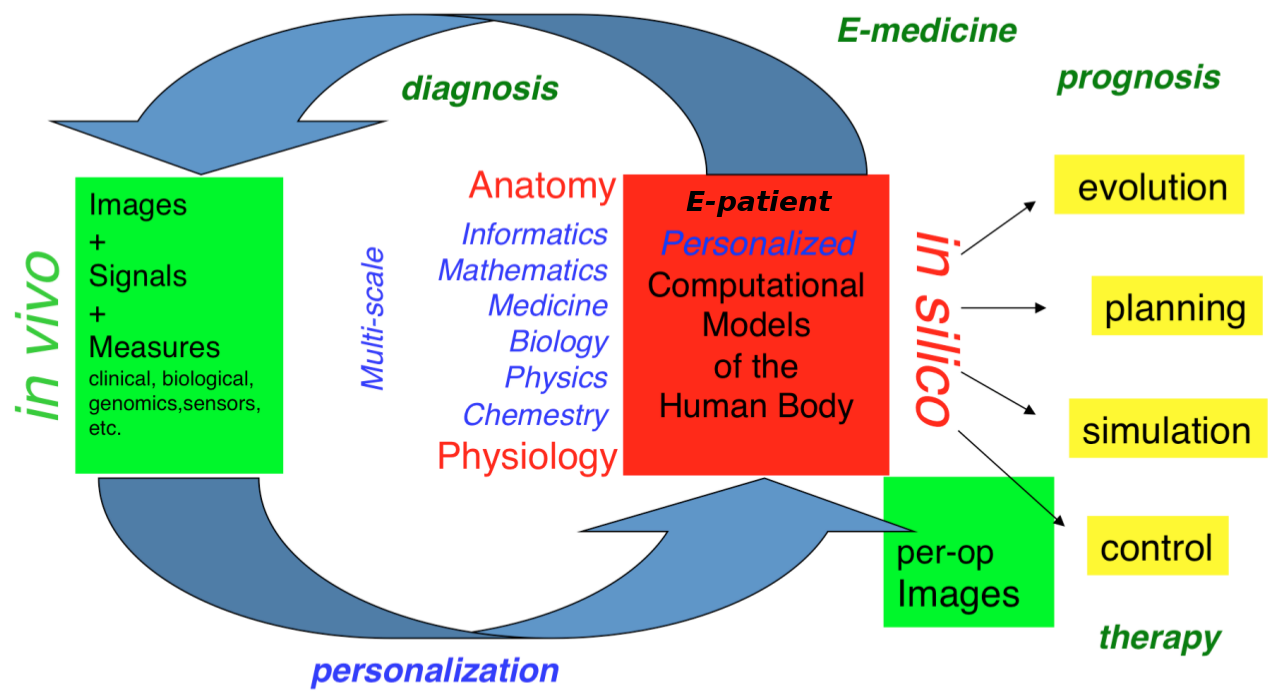

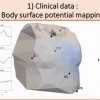 Non invasive cardiac personalisation
Non invasive cardiac personalisation
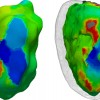 Simulation of ventricular tachycardia re-entry circuit
Simulation of ventricular tachycardia re-entry circuit
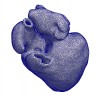 heartMeshFine
heartMeshFine
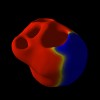 Electrophysiology
Electrophysiology
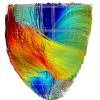 Cardiac Fibres from in vivo Diffusion Tensor Imaging
Cardiac Fibres from in vivo Diffusion Tensor Imaging
